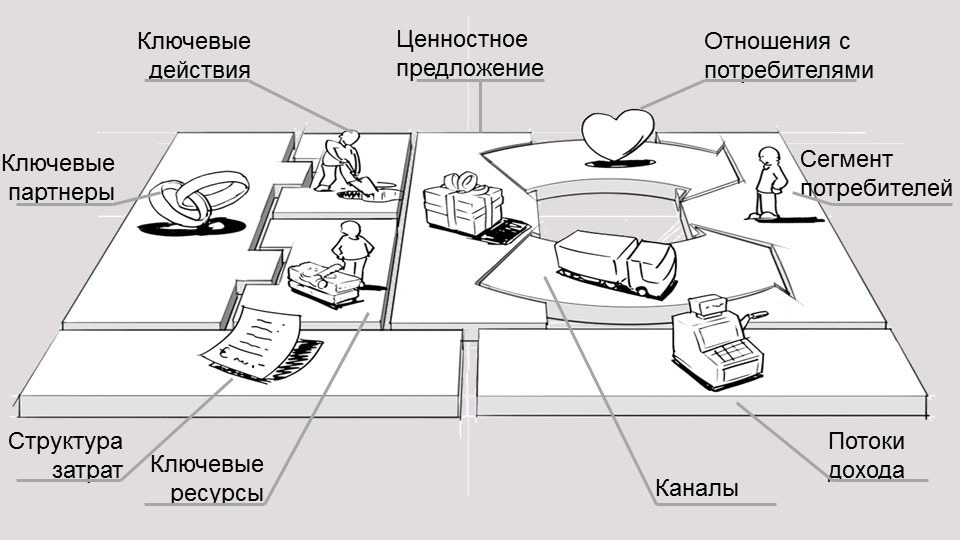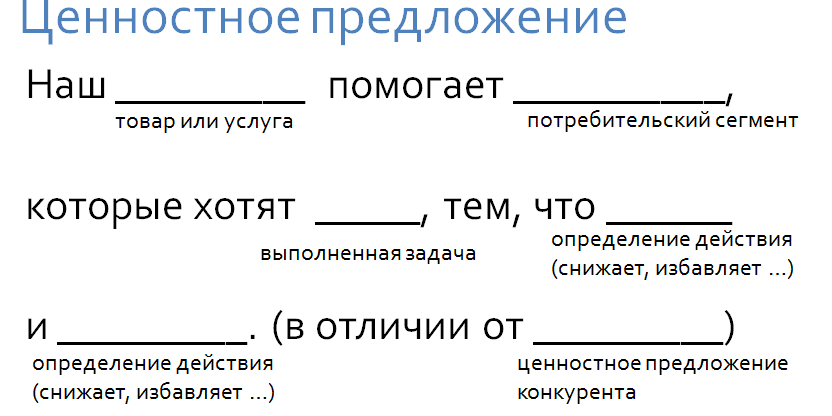Why the investor refuses. Bug work

Recently I took part in the filming of the live show of the Time to Act , where the battle between the opportunist (Vitaly Vinogradov) and the visionary (Vyacheslav Semenchuk) took place.
Vitaly Vinogradov, the venture partner of the investment fund Rubicon Venture Capital, I really liked the idea that the biggest pain of an investor is unstructured content, which a start-up gives to investors. According to him, this is a frequent reason why an investor immediately refuses a startup. I would like to share with you my experience on how to state the essence of the project in a clear and concise language so that the investor has a complete picture of the project and does not have porridge in his head.
Step 1. The pain of the client.
Our favorite question “what is the client’s pain” is confused by some with the question “what problem does the product solve”. This is not entirely true. The problem may exist, but it may not be pain, and may be very weak, like a hole in a tooth. They got used to it for a long time, they live with it for many years, and it doesn’t bother, until complications go.
Also, for example, crowded subway cars in the morning. It may be terrifying for guests of the capital and some residents, but for those who use the subway for many years to work this problem is not pain, he does not notice it. 14 million people a day is not transported differently. Fast, cheap, warm, safe - and thanks for that.
“Every pain is a problem, but not every problem is a pain”
Step 2. The problem that the product solves.
The product can eliminate the pain completely, but some part of it can be solved. If the pain is very acute, the client will pay money even for partial relief of the pain.
In our classes, the approach works very well when the author of the project voices the problem on his own behalf. Then he chooses words better and thinks over the problem more carefully.
')
For example, here's the formula:
“I believe that some people [which?] In the process of [what?] Face a problem [which?]”
Step 3. Market.
The main trends, the maturity of the industry, the market volume, the current situation on the market.
Step 4. Competitors.
When a startup says that it has no competitors, then something is wrong with this project.
The question naturally arises:
“How is the problem that your product solves (without your product) solved at the moment?”
If the answer "Does not solve it at all", then maybe this problem has been sucked from the finger and this product is not needed by anyone?
When analyzing competitors do not forget that competitors are direct and indirect.
“If consumers do not buy or use your product, which product will they buy and use?”
Analysis of competitors is made in the form of a table.

Total:
“If you have no competitors, it means you were looking bad”
Step 5. Business model.
Here, the business model template proposed by Alexander Osterwalder will be very useful.

The consumer segment is your target audience for which the product is intended. The better you imagine a consumer portrait, the better.
Value proposition - what you offer the consumer to solve his problem.
Value proposition can be formulated according to the following formula:

Channels - how do you plan to deliver your value proposition to the consumer (direct sales, referral program, social networks, etc.).
Relationships with customers - how you will contact and support customers (personal service, automated service, forum, group in social networks).
Key Actions - Describe the basic steps you need to take to make a product. It is also useful to single out one key action in the whole process, the execution of which will bring you money (exactly one, the other minor ones).
Key partners are companies without which you cannot fully create and maintain a product (component suppliers, logistics, outsourcing, etc.).
Key resources - what you need to create a project (people, money, real estate, production facilities).
Revenue streams - how do you plan to make money (subscription, sale of licenses, advertising).
Cost structure - the main items of project expenses (software development, research, salary, promotion, rental of a luxurious office).
Step 6. Intellectual property.
The presence of intellectual property (patents, inventions, computer programs, databases, topologies of integrated circuits, and so on) is one of the best non-competitive advantages. If there is no intellectual property, but you plan to register, then this must also be indicated.
Step 7. Team.
Tell about the members of your team and the competence of each of its members. It is very important to show that you and your team are able to realize the intended project.
"Better a strong team with a weak project than a weak team with a strong project."
Step 8. The current state of the project.
At what stage is the project, how much has been invested in it (including own funds), how much money do you need to raise, what else does the project need (not everyone gives money, someone can help you with other key resources).
Step 9. Risks.
Describe the main risks and entry barriers that exist for your project. Understanding what market, competitive, managerial and other risks await you will help avoid many fatal mistakes in the future.
PS I didn’t specifically write anything about economics here, because at the PowerPoint startup stage it’s usually very difficult to calculate financial performance if we speak of a startup as a new product that the market hasn’t seen. Do not confuse a startup and a small business, to open a "tire on the area" - this is not a startup. For startups at later stages, I may write a separate article later.
The order of presentation and a set of questions depend on who you go to and how much time you have for the presentation, but with such a set of content blocks about your project you can prepare for almost any presentation.
Source: https://habr.com/ru/post/300758/
All Articles